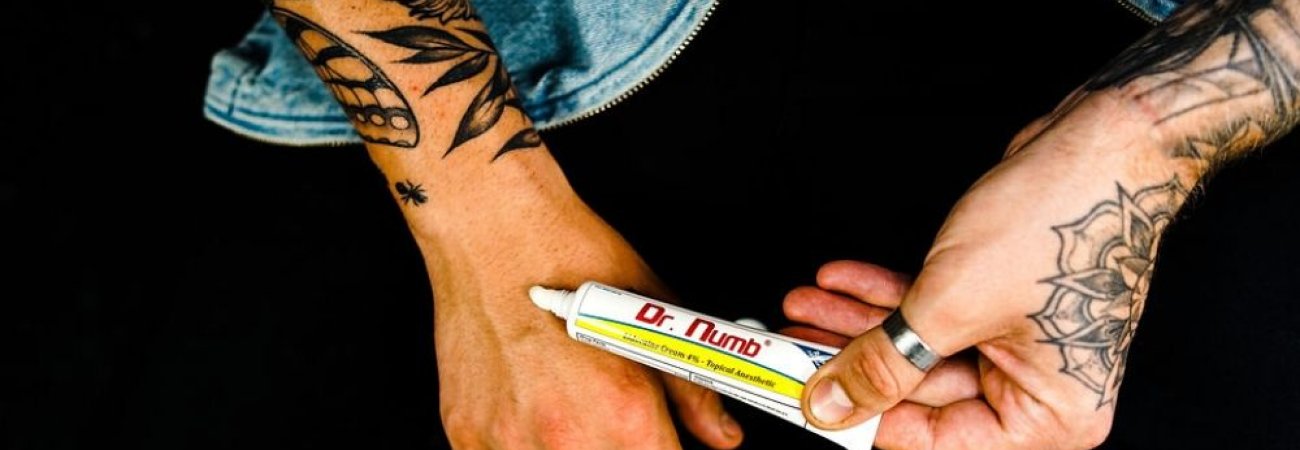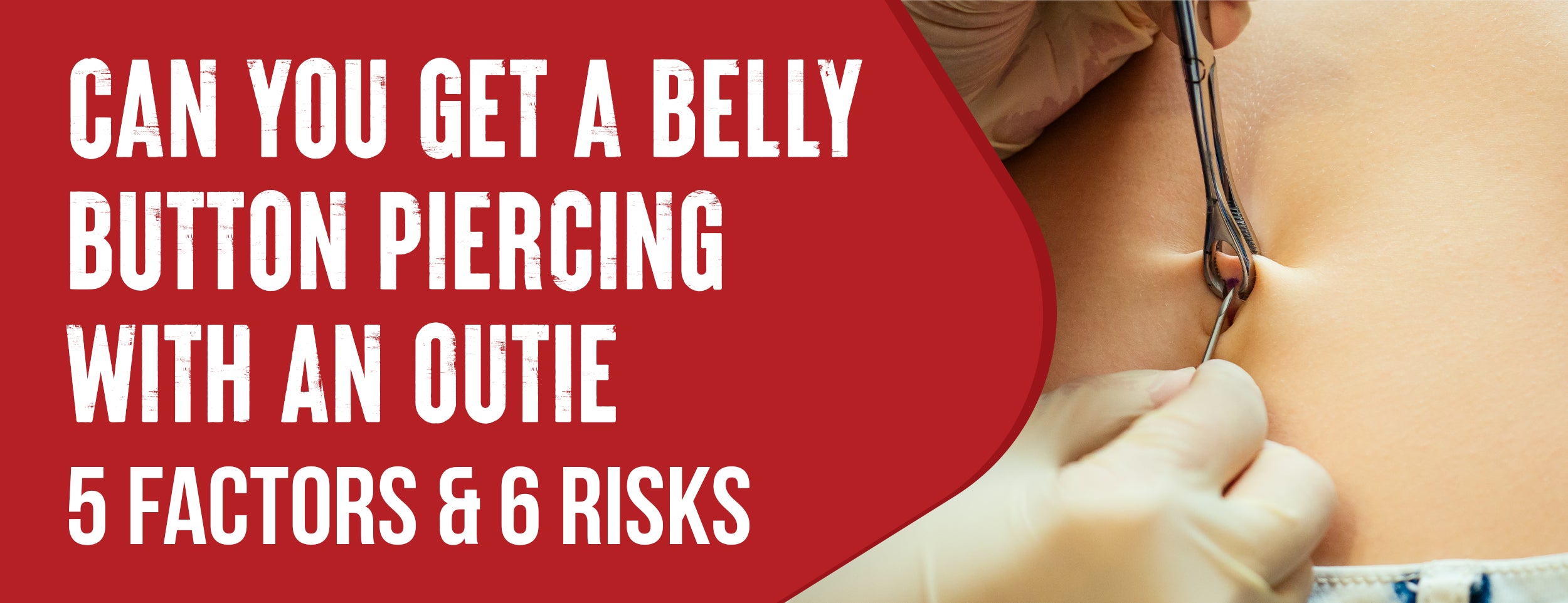You can change or remove a belly button piercing yourself, but make sure it's fully healed. Most piercers suggest waiting a year, but it's best to consult your piercer if you can't stay.
You should wash your hands thoroughly before removing a belly button piercing. To remove the ring, turn it back and forth while pulling gently. Finally, rewash the piercing region to sanitize it.
This blog post will detail each procedure step, from preparation to removal.
How To Remove Belly Button Piercing: Preparation

Before you even touch your belly button piercing, it's crucial to prepare for the removal process. You'll need to clean your hands and gather the supplies.
Hand Hygiene Before Removal
Just like how you wouldn't want a doctor with dirty hands performing surgery on you, you don't want to remove your belly button piercing with unclean hands, either. A thorough hand wash with warm water and soap is a must. Here's why:
- It removes dirt and germs: Dirty hands can introduce bacteria into the piercing site, which could lead to an infection.
- It keeps the area safe: Clean hands help to maintain a safe and hygienic environment around your piercing, reducing the risk of complications.
You would only eat your lunch by washing your hands first, would you? The same principle applies here. Just as you don't want germs in your food and make yourself sick, you don't like to get germs in your piercing site.
Gathering the Necessary Supplies
The second part of preparing for the removal of your belly button piercing involves gathering all the supplies you'll need. Here's a list of what you should have on hand:

- Clean gloves: These will provide an extra layer of protection against bacteria.
- Antiseptic wipes: You can use these to clean the area around the piercing before and after removal.
- A clean towel or cloth: This will be used to dry the area gently after cleaning.
- A small container: Place the jewelry in this container after removing it.
Think of this step as packing for a camping trip. Wouldn't you hate to arrive at your campsite and realize you forgot your tent? In the same way, you don't want to start removing your belly button piercing only to realize that you don't have everything you need.
Belly Button Piercing Removal: Safe Procedure

Now that you've prepared your belly button piercing removal, it's time actually to remove it. Here's a step-by-step guide to safely remove the piercing jewelry.
Cleaning the Area Around the Piercing
Before beginning the removal process, it's essential to ensure that the area around the piercing is clean to minimize the risk of infection.
- Ensure you wash your hands thoroughly to prevent any transfer of bacteria to the piercing site.
- Prepare a saline solution or use mild soap and water to disinfect the piercing area. If dirt or debris has accumulated, gently remove it.
- Avoid harsh chemicals or alcohol-based solutions, which can irritate the skin and delay healing.
- Once the area has been cleaned, pat it gently to remove excess moisture.

Carefully Unscrew or Unhook the Jewelry
Once the area surrounding your piercing is clean, you can remove the jewelry from your belly button.
- If your piercing jewelry is a ball closure ring or a barbell, use clean hands to carefully unscrew the ball or detach the ends of the barbell.
- Take your time and be gentle to avoid causing any discomfort or irritation to the piercing site.
- If your jewelry has a hook closure, such as a captive bead ring, carefully unhook the closure without applying too much pressure to the piercing.
- If you encounter any resistance while unscrewing or unhooking the jewelry, stop and seek assistance from a professional piercer to avoid causing any damage to the piercing or surrounding tissue.
Ensuring Minimal Contact with the Piercing Hole
During removal, minimizing any contact with the piercing hole is essential to prevent irritation or injury.
- Avoid touching the piercing hole directly with your fingers or any objects to reduce the risk of introducing bacteria or causing trauma to the area.
- Handle the jewelry carefully and avoid pulling or tugging on the piercing, as this can lead to tearing or stretching of the skin.
- If you need to adjust the jewelry to remove it more quickly, move gently to avoid straining your piercing site.
- Once the jewelry is removed, sanitize the area with a saline solution to ensure it remains clean and bacteria-free.
You can safely remove your belly button piercing causing no harm to your skin or risking infection. If you have any concerns or experience difficulties during removal, don't hesitate to consult a professional piercer for assistance.
The Removal of Belly Button Piercings: Reasons

You'll find out why someone might want to get rid of their belly button piercing in this section. You'll also see if there are any signs of infection or rejection.
Reasons for Removing Belly Button Piercing
There are several reasons why a person might choose to remove their belly button piercing:
- Change of Personal Style: People's fashion sense and style can evolve. What once seemed like a great idea might not align with their current taste.
- Professional Requirements: Some jobs may require employees to remove visible piercings.
- Health and Fitness Activities: Certain activities like yoga, martial arts, or other physical sports might necessitate the removal of the piercing to prevent injury.
- Pregnancy: During pregnancy, the belly expands and stretches, which can cause discomfort or complications with a belly button piercing.
Signs of Infection or Rejection
Recognizing the signs of infection or rejection is crucial for maintaining the health of your piercing. Here are some signs to look out for:
- Redness and Swelling: While some redness and swelling are normal after getting a piercing, if these symptoms persist or worsen over time, it might indicate an infection.
- Pain: A certain level of discomfort is expected after a piercing, but long-term pain or severe discomfort might indicate an infection.
- Discharge: If there's a yellow, green, or gray discharge coming from the piercing site, this could be a sign of infection.
- Rejection: Your body might reject the piercing, which can cause the jewelry to move or the skin around the piercing to thin. This can lead to the piercing being pushed out of the body entirely.

Conclusion
And there you have it. The ABCs of belly button piercing removal. Remember, safety should always be your top priority when dealing with body modification.
It's all about taking the right steps, from maintaining hand hygiene to using the correct supplies and following the removal process carefully.
Remember that it's your body, and your comfort and health are most important. You can remove your piercing if you are experiencing discomfort or signs of infection.
You can also switch to a retainer instead. Make informed decisions and enjoy your unique style safely. You beautiful diamonds, stay safe and keep shining until next time.



















